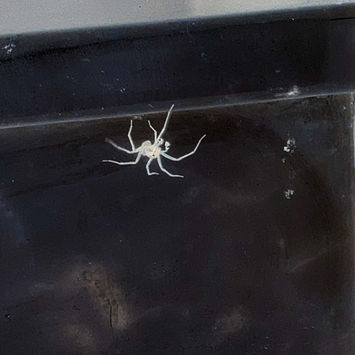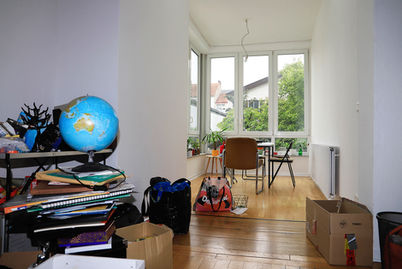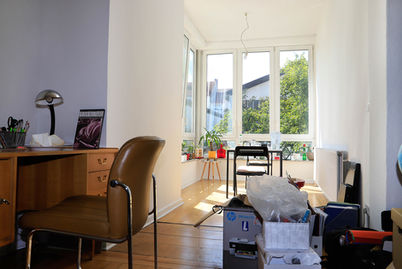Iconophobia
Are you afraid of heights? A fear of thunderstorms? Or a phobia of spiders? Do you develop new phobias in the course of your life? Do phobias disappear on their own at some point? Can they be overcome or do they last a lifetime? Are there people who suffer from phobias but are not even aware of it?
These questions have always preoccupied me. They led me to the consideration that is at the center of my bachelor's project Iconophobia: If you have a fear of certain things - how do you react when you see pictures of them in an exhibition? Does the sight of them trigger you? I began to look more closely at phobias and in the course of my research realised that there are countless types of them including many bizarre ones. Iconophobia deals with specific phobias that are not familiar to us but are extremely tangible because they affect everyday things such as trypophobia (fear of holes) or amathophobia (fear of dust).




twice told
What do we define as a still-life these days? When does it stop being a still-life? What are the criteria for this category? Are there any rules? If so, can you break these rules? If you think about still-life, the first thing that comes to our mind are mostly either a Vanitas, the one’s with a skull or a simple flower still-life in the baroque time period. This project is focussed on abstraction and minimalism. The idea of it is to keep it simple, to catch the objects that are usually inconspicuous and do not seem to be the prettiest to look at at first. But especially with some digital help afterwards, you can even turn the most boring things into something exciting. By editing the original colour, for example by playing around with the saturation and possibly even exaggerating it. Or simply manipulating the original format which can make the pictures look completely different. The meaning behind this work is to always look around and observe your surrounding very carefully, sometimes you have to look twice to see the beauty in things. Besides, the images might confuse the viewer. What can you actually see here? With the help of close-ups and the manipulation of the formats you are able to alienate the objects so that the viewer is forced to have a closer look at the pictures. And again the question: Are there any rules for still-lives? In addition: Where even is the top and where is the bottom? Is it even important to know about this?












red cups
The concept of the work is a constant return of the same:
A capriole of red cups falling from above out of the frame into the picture, landing on
four different surfaces, sometimes more, sometimes less noisily, according to the surfaces, as well as
a capriole of red cups falling from the top of the frame into the picture, landing on
four different backgrounds, sometimes more, sometimes less noisily, according to the backgrounds, and
a capriole of red cups falling from the top of the frame into the picture, landing on
four different backgrounds, sometimes more, sometimes less noisily, according to the backgrounds, and
a capriole of red cups falling from the top of the frame into the picture, landing on
four different backgrounds, sometimes more, sometimes less noisily, depending on the background.
The bright red of the cups contrasts with the monotonous background that fills the picture. The complete focus on the central elements of the sequence forces the viewer to focus on the central elements of the sequence.

The same, quite different
This project is a visual diary. It shows how my days change over time as well as how they stay as they are.
I picked one specific position in my flat from where I took pictures with a tripod for a month.
I started with it just at a time when the covid pandemic caused loads of changes in our social life. In addition to that something in my private life changed too, in fact I was moving to another place.
At the beginning I could not handle the situation not having a social life as normal. I was completely overwhelmed. I needed to look for things to do to not become insane and start to feel sorry for myself.
Over time I got used to the situation though and I noticed that I became more and more creative. My flat turned into my personal little studio. I discovered some skills and features about myself that I did not know about before. I was capable of so much more than I thought.
Unfortunately there were worse days too. I lacked motivation for literally anything. For uni, for my flat and for my private life. I reached my limits and questioned myself: What am I lacking?Who am I missing?
Due to the fact that you had to avoid contact with other people, for the first time in such a long time I was forced to focus and concentrate on myself. This was something I had to struggle with a lot at first because I used to always feel most comfortable having people around.
At some point I realised it was good for me to be alone for some time. And I could use the forced lockdown, that made my days seem very similar, in a productive way for myself.
That’s how the same turned into something quite different.
Zerrollte Lage (Rolled Out)
Table tennis balls that were cut, dented and coloured. You see a composition exercise and an experiment
with different perspectives.












Single works

















































